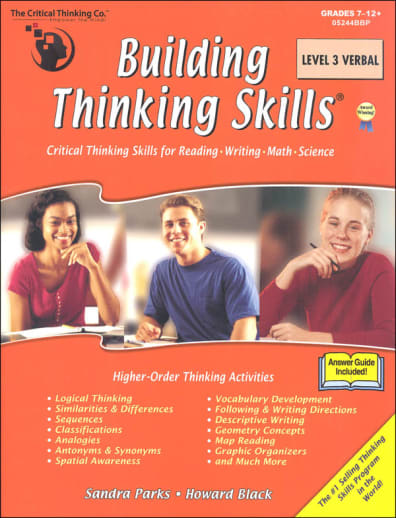This engaging 384-page book develops critical thinking skills necessary for success in reading, writing, math, science, social studies, and standardized tests in Grades 7-12. The Building Thinking Skills® series is the bestselling thinking skills program in the world! The engaging, highly-effective activities are developmentally sequenced. Each skill (for example, classifying) is presented in the abstract verbal form and in the abstract figural (spatial) form in this book's companion Building Thinking Skills® Level 3 Figural. Students also learn important academic vocabulary, concepts, and skills as they analyze relationships between objects, between words, and between objects and words by:
- Observing, recognizing, and describing characteristics
- Distinguishing similarities and differences
- Identifying and completing sequences, classifications, and analogies
These processes help students develop superior thinking and communication skills that lead to deeper content learning in all subjects.
LEVEL 3 VERBAL
- Spelling / Vocabulary / Writing: describing things and words
- Following and writing 1-, 2-, and 3-step directions
- Antonyms / synonyms
- Analogies: kind of / part of / used to / association / action
- Deductive / Inductive reasoning
- Parts of a whole
- Map reading
- Writing directions
- Logic: if-then / yes-no / true-false
- Orientation: person / place / time
- Auditory memory
- Language acquisition
- Denotation and connotation / degree of meaning
Teaching Support
Activities are modeled to reinforce skills and concepts. An answer guide is now included, however, a separate Instruction/Answer Guide is also available but is not required. The optional teaching guide includes objectives and focus questions that reinforce analytical skills. See components sold separately above for ordering information about the separate, optional Instruction/Answer Guide.

